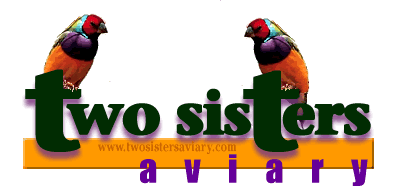
| Buying
a new bird? ... here are a few things to keep in mind! |
|
| You
have just found that perfect feathered friend. You have
checked it out closely, and it appears to be healthy. Having
researched all about the species, you have the carrier ready with
food and water, and you remembered to ask the previous owner for
some of the food your new pet is used to eating. You have even
purchased your new pet's home, sized just right, based on
your thorough research. Now everything is ready,
right!? Not so fast ...
First, remember that your new friend is going through significant stress during this move. Not only should you make sure that the water is very evident in the new home, but also consider enriching the normal drinking water with a supplement such as Spark Electrovet. In this case, you would remove all other water sources from the cage. During times of stress, birds require extra energy and body salts which can be provided through a high calorie electrolyte such as Spark. Also, if you are bringing your new friend home to an existing family, remember that even though a bird appears healthy, it can carry disease or pathogens that can effect your entire flock. Preparing for the introduction of a new member into the aviary can help to prevent any negative consequences. What follows is a list of steps for quarantine, based on references listed at the end of this article: 1. Place your bird's new home in a warm, quiet area which allows him/her to get used to the new environment. Preferably, this area should be in a separate air space from the rest of your aviary. 2. Prior to bringing your new bird and carrier into the quarantine area, spray the cage and bird with Avian Insect Liquidator, A.I.L. to eliminate external parasites such as Lice or Mites. 3. Remember that even the smallest thing, such as moving your bird to a new cage or moulting can cause stress. This can depress their immune system and lead to health problems. After moving your bird to it's new home offer a supplement such a Spark for the first 24 hours as described earlier. 4. Next treat the new arrival(s) with WormOut Gel, to eliminate internal parasites (worms). Add 1 ml of WormOut Gel to 160mls water, removing all other water sources from the cage. As some fussy drinkers may not like the taste, add 1 tsp of strawberry syrup to sweeten. (2 days) 5. Eliminate protozoa with a mixture of 4g Ronivet-s with 4 L water. (5days) 6. Next treat the bird(s) with a full spectrum antibiotic, such as Amtyl being sure to follow label directions closely and administer for the entire period as specified. 7. Follow the full spectrum antibiotic with a live microbial feed supplement, such as Probotic, which replaces the natural gut flora after the administration of antibiotics. (3 days) After 2 weeks, you will have cleared birds of most avian pathogens with the exception of viruses. If viruses are present, symptoms should be obvious by this time. Symptoms to watch for during quarantine are "inactivity, eye or nasal discharge, weight loss, soiled vent or diarrhea, (cages lined with paper make observation of droppings easier), wheezing or gasping". Only if the birds are not exhibiting any of these symptoms and appear healthy, should they be introduced into the existing aviary. Nutrition: Good Hygiene: Note: Marge Morrell References: |
|